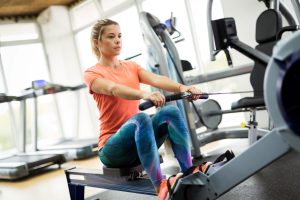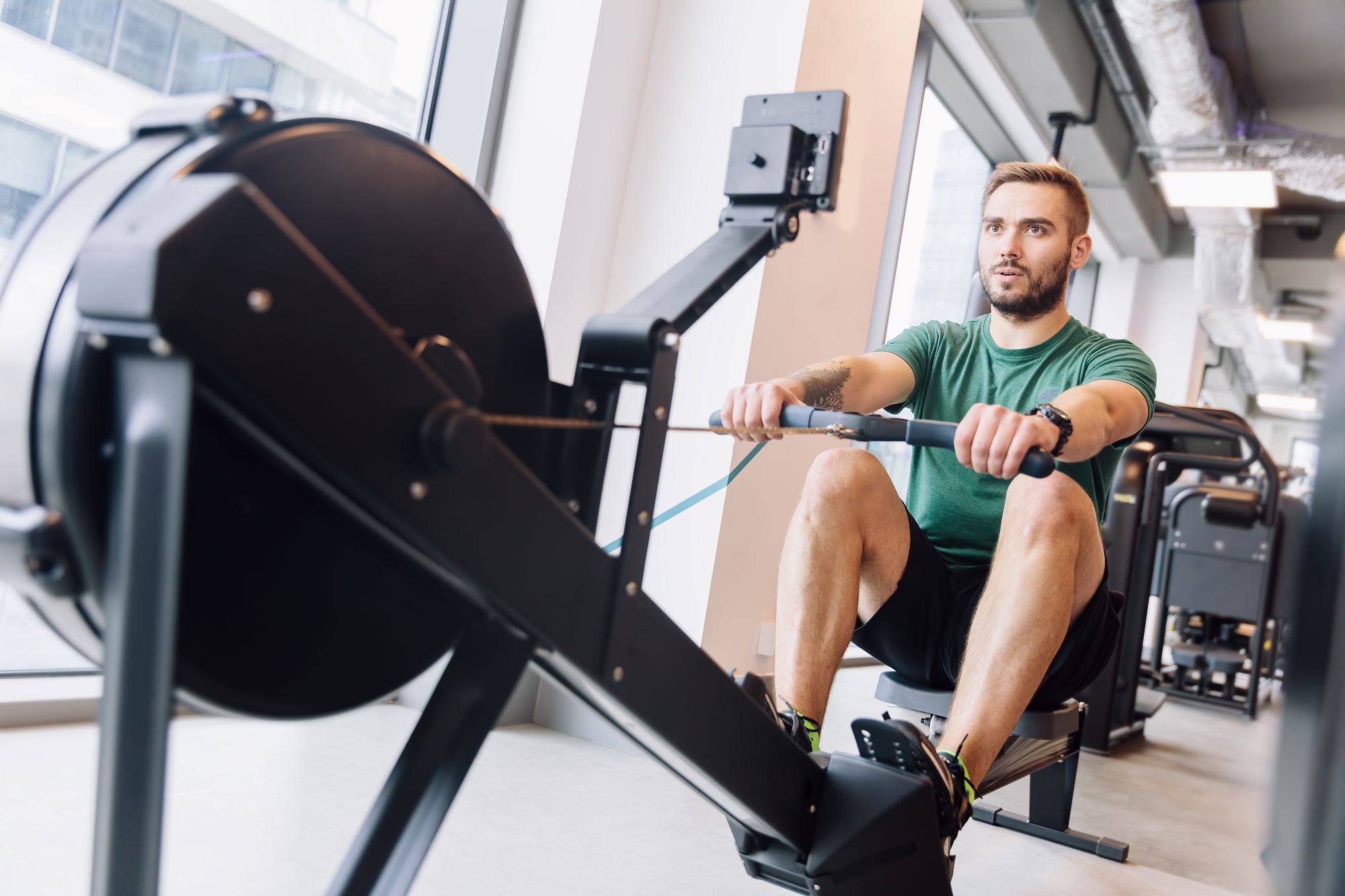Rowing, often perceived as an age-old method of transportation across water, has evolved into a powerhouse form of exercise. With every stroke, you engage your muscles and build up a sweat—making it a workout worth plunging into.
Rowing, as smooth as it seems, packs a punch when it comes to boosting cardiovascular health. It’s a golden ticket to strengthening not just your heart, but also an array of muscles from your back to your calves. But wait, there’s more! This whole-body workout also hikes up your endurance. You’ll notice your stamina soaring as you cut through the waves or blaze away on an indoor rower.
While bicep curls and squats are great, integrating rowing into your workout adds a splash of diversity. It’s the perfect cocktail—a full-body, heart-pumping, and fun workout. It fills in the gaps, ensuring your fitness journey is well-rounded and complete.
The Basics Of Rowing
Rowing can be as fresh as a cool lake or as convenient as your living room. On-water rowing offers a scenic and natural experience. On the other hand, indoor rowing machines bring the thrill home. Plus, if you’re looking for an indoor rower, there are many high-quality rowing machines for sale to get you started.
Before diving into the techniques, it’s essential to break down some jargon. ‘Stroke rate’ refers to the number of strokes taken per minute, and ‘split times’ indicate the speed at which 500 meters are rowed. As proficiency in rowing increases, these terms will become familiar to you.
Now, onto the nitty-gritty—technique and form. These are crucial for an effective and injury-free rowing session:
- The Catch: This is where it all begins. With knees bent and shins vertical, lean forward slightly, and grip the handle. Like a coiled spring, you’re ready to launch.
- The Drive: Explosively push through your legs, engage your core, and lean back. This phase is all about power, so give it all you’ve got.
- The Finish: You’ve almost completed a full stroke! Your legs are extended, lean back slightly, and pull the handle to your lower ribs. You’ve earned a brief moment of glory before the next phase.
- The Recovery: Time to reset. Extend your arms, hinge forward at the hips, and bend your knees to glide back to the catch position.
Perfecting these four phases ensures a harmonious and powerful rowing stroke. Keep in mind, consistency and attention to form lay the foundation for an effective and injury-free rowing experience.
Rowing For Cardiovascular Fitness
Cardiovascular health is like the backbone of your overall well-being because it involves the heart and blood vessels working to supply oxygen and nutrients to your body. Keeping this system in top shape is super important so you can avoid illnesses and have the energy to enjoy life.
This is where rowing comes in handy. Rowing is like a full-body workout that gets your heart pumping and your lungs working. Doing this regularly helps your heart and lungs become stronger and more efficient.
To make the most of rowing for your heart and lungs, here are three different workouts you can try:
- Steady-State Rows: This is like going for a long, steady jog but on a rowing machine. Keep a nice, even pace and just keep going. Great for building endurance.
- Interval Training: Here, you mix it up—row hard and fast for a bit, then slow down and take it easy, then ramp it up again. It’s like playing high-intensity musical chairs with your rower.
- Pyramid Workouts: Think of this as climbing a hill and then coming back down. You start slow, build up the pace, and then slow back down. It keeps your heart guessing and adapting, which is a good thing.
Give these workouts a whirl, and you’ll be on your way to a stronger and healthier heart in no time.
Rowing For Strength Training
Rowing isn’t just about cardio; it’s also your ally in building muscle. It targets a wide array of muscles, including your legs, back, arms, and core. Imagine combining a leg press, a deadlift, and a seated row all in one exercise.

Here are three rowing workouts geared toward strength:
- Power Strokes: Focus on rowing more forcefully but at a slower rate. Think of it as moving a heavy barbell; it’s not about speed but power.
- Sprint Intervals: Go all out for short bursts. This is like the sprinting version of rowing, pushing your muscles to the max in little spurts.
- Rowing With Added Resistance: Increase the resistance on the rower. It’s like adding more weight to your barbell; the more resistance, the harder your muscles work.
Employing these strength-focused rowing workouts can lead to noticeable gains in muscle power. It’s an efficient way to bulk up and become your strongest self.
Rowing For Flexibility And Balance
Rowing doesn’t just stop at building your heart and muscles; it can also be your secret weapon for improving flexibility and balance. The fluid motion of rowing stretches your muscles and requires coordination, which can help you become more limber and balanced.
Flexibility and balance aren’t just for gymnasts; they’re super important for just about everything—from tying your shoes to playing your favorite sport. They help you move smoothly and avoid injuries.
How about mixing some stretching and balance exercises into your rowing routine? Before and after rowing, take some time to stretch your muscles. Throw in some balance exercises like one-legged stands or yoga poses.
Conclusion
If you’re looking to spice up your fitness routine, give rowing a shot. It’s a game-changer, blending cardio, strength, and flexibility all into one exhilarating workout. Alongside exercising and eating right, integrating rowing could be the missing puzzle piece in your quest for a balanced and effective fitness routine. Rowing adds that zest, empowering you to achieve your health goals.

